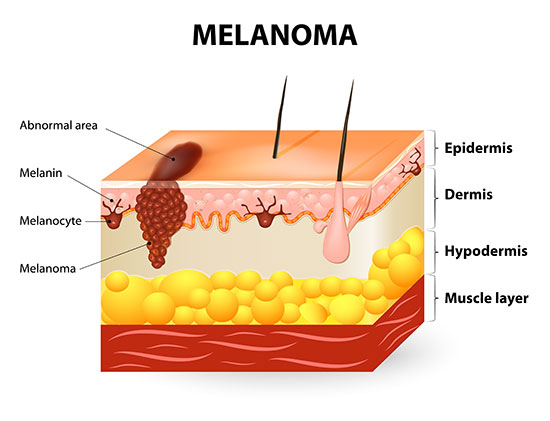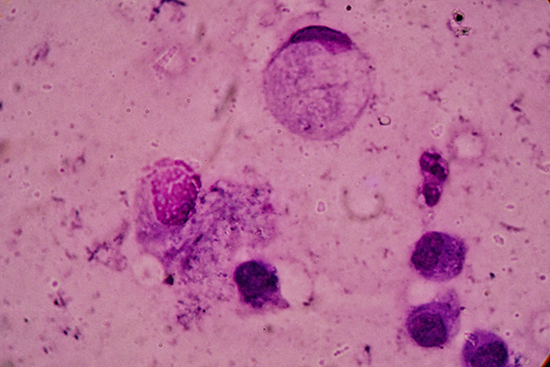Types of Skin Cancer
Learn the different types and treatment options for Skin Cancers

Carcinomas
Basal Cell Carcinoma
Basal cell carcinoma is the most common form of skin cancer and most common cancer overall in the United States. It is characterized by an uncontrolled growth or lesion that arises in the skin’s basal cells, which line the deepest layer of the epidermis (the outermost layer of the skin). It often appears as a slightly transparent bump, though it can take many forms. Basal cell carcinoma generally occurs on areas of the skin that are exposed to the sun. Exposure to ultraviolet (UV) radiation contributes to the risk and development of basal cell carcinoma.
Treatment options include topical immunoactivators (Imiquimod), topical chemotherapies (5-fluorouracil), electrodessication and curettage, or excision. The type of treatment depends on the subtype, size and location on the body.

Squamous Cell Carcinoma
Squamous cell carcinoma is the second most common form of skin cancer. It is characterized by an uncontrolled growth of abnormal cells that arises from the squamous cells in the epidermis, the skin’s outermost layer. It often appears as scaly red patches, open sores, warts or elevated growths with a central depression. Squamous cell carcinoma can occur anywhere on your body but generally occurs on areas exposed to the sun. Long-term exposure to ultraviolet (UV) radiation over a lifetime causes most cases of squamous cell carcinoma.
Treatment typically involves excision, as these growths have a risk of spreading in the body. Electrodessication and curettage treatments can be used for smaller growths. For squamous cell carcinoma in-situ, or very thin growths, topical therapies can be considered.
Melanoma
Melanoma is one of the most dangerous forms of skin cancer and has a high risk of spreading if left untreated. It develops in the cells that produce melanin, the pigment that gives skin its color. Melanomas typically appear as black or brown growths, though they can also be skin-colored, pink, purple, red, blue or white. Ultraviolet radiation from the sun and tanning beds have been shown to markedly increase your risk.
Excision is mandatory for melanoma. Depending on the growth features, it may require a visit to a surgeon and a lymph node biopsy.


Rare Forms of Skin Cancer
Other types of skin cancer are uncommon, but they do occur. The experts at Columbia Skin Clinic can help diagnose and provide treatment plans for the following rare skin cancers:
- Merkel Cell Carcinoma
- Kaposi Sacoma
- Cutaneous Lymphoma
Schedule an Appointment or Consultation
Our dermatologists are here to help!
With four convenient locations in the Midlands, Columbia Skin Clinic has a commitment to delivering excellent dermatology care.



